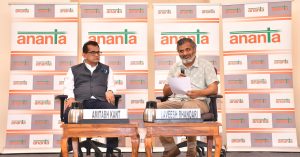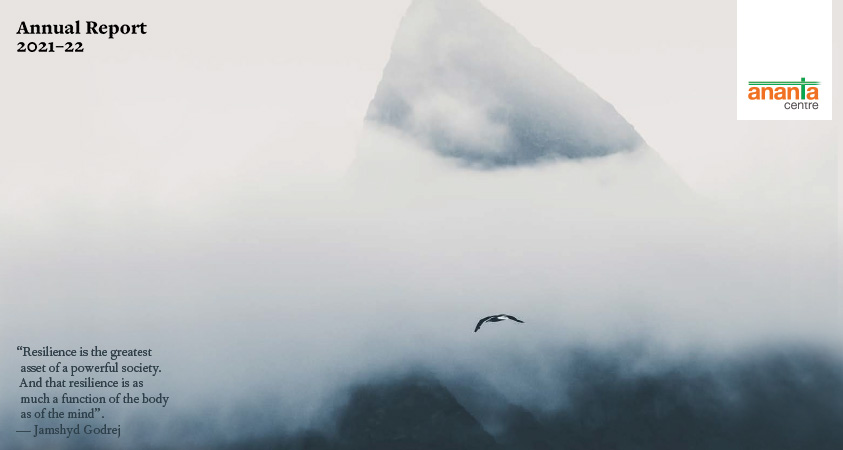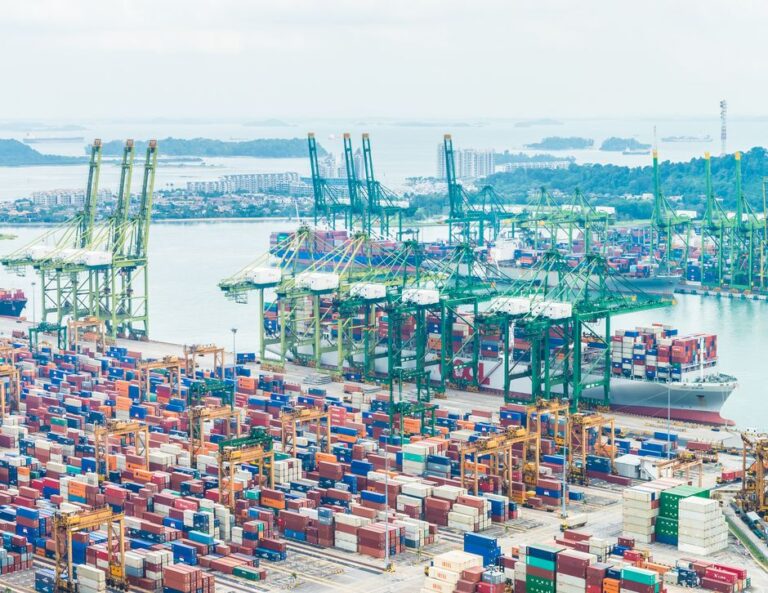Russia-Turkey accord keeps Syrian political process alive
There were upheavals in the Syrian theatre, with President Trump’s sudden decision to withdraw US troops, Turkey’s military action to create a “safe zone” in northern Syria (see RR 1/19 & 5/19), consequent US sanctions on Turkey, lifting of the sanctions after Vice President Pence brokered a temporary ceasefire, and President Trump’s announcement that US troops will remain in northeast Syria, ostensibly to keep the oilfields from falling into ISIS hands.
Amidst these volatile developments, Russia strove for outcomes that would acknowledge Turkey’s security concerns and advance the Syrian government’s control over northern Syria (through occupation and accommodation with Kurdish groups). Most of all, Russia wanted to prevent these developments from derailing the hard-won progress towards a Syrian political settlement, through the Syrian Constitutional Committee that the Astana process (comprising Russia, Turkey and Iran) had helped to constitute and which would, under UN supervision, evolve a new constitution for Syria, paving the way for elections and a new government in that country.
The Trump withdrawal decision caught the Russians off-guard, as did the speed with which Turkey launched its military action thereafter. The Russian official reaction signalled disapproval, but was cautious. FM Lavrov recognized Turkey’s “legitimate” security concerns, while urging peaceful addressing of these concerns in the framework of the Syria-Turkey Adana agreement of 1998, by which Syria had undertaken to prevent Kurdish terrorist activities across the Syria-Turkey border. In telephone conversations, President Putin urged the Turkish President not to move in a manner as to damage the efforts to resolve the Syrian crisis.
Russia also moved swiftly to broker an understanding between Syrian Kurd leaders and the Syrian government and to encourage the Syrian army (with Russian support) to move into western areas of the Syrian-Turkish border, including the strategic town of Manbij before the Turkish operations could reach there.
The Turkish action was launched nevertheless, with the consequent international criticism over civilian casualties moving President Trump to impose sanctions on Turkey and to despatch Vice-President Pence to negotiate an end to military hostilities. The deal announced by him provided for a five-day pause to the Turkish military operations, to allow the Kurdish armed groups to withdraw from a safe zone of about 30 km depth, along 120 km in the central sector of the Turkish-Syrian border (between the towns of Tal Abyad and Ras al-Ain) – about one-third of the length of the border.
The Russians took it on from there, with a marathon 7-hour Putin-Erdogan meeting on October 22 hammering out an accord, with provisions to make the “pause” more enduring. They confirmed the agreement with Vice President Pence that Kurdish forces would move out of a thirty km belt from the border. Russian and Turkish troops would jointly patrol the borders. The rest of the border zone will be secured by the Syrian army and joint Turkish/Russian military patrols to ensure the absence of Kurdish [Syrian Democratic Force or other] fighters. The Russian military presence is meant to deter Turkish military action in the predominantly Kurdish and Arab areas to the east and west of the Turkish-controlled safe zone. Turkey will, however, remain in occupation of the westernmost Kurdish enclave of Afrin, which it occupied in January 2018.
As President Trump’s critics have been pointing out, the US withdrawal, the Putin-Erdogan accord and the Kurdish-Syrian government accommodation have enabled Syrian troops to regain control of areas of northern Syria that they had effectively ceded to Kurdish militias in 2012, to deal with the civil war in the rest of the country. These developments have also helped Russia to project itself as a more reliable protector of Syrian Kurdish interests. It was reported that the commander of the Syrian Democratic Force had a video conference call with the Russian Defence Minister and the Chief of General Staff, when they reassured the Kurdish civilian population that Russia and the Syrian government would ensure their safety, and were duly thanked by the Kurdish general for “saving the Kurdish people” and securing a ceasefire. Russia has always kept a line open to the Kurds; it has even allowed the “Rojava Self Ruled Administration” of Kurdish-held northern Syria to open a representative office in Moscow.
Russia’s Defence Minister assured his US counterpart that Russia would take all appropriate steps, together with the Syrian government, to ensure a safe withdrawal of all foreign soldiers. Russian media gleefully highlighted the contrast between the welcoming of Russian troops by Kurdish civilians and their hurling insults at US troop convoys crossing over from northern Syria into Iraq. To rub salt in the wound, the commander of Russia’s airbase in Syria publicly appealed to locals to refrain from harassing the withdrawing Americans.
A complete American withdrawal and the Russia-Turkey accord should facilitate the Syrian government taking over the oil-rich Deir ez-Zor region in northeast Syria, thereby providing it with much-needed oil revenues. President Trump’s recent decision that “a small number of US troops will remain in the area where they have the oil” seems designed to prevent this. However, the security of such a small American military presence, surrounded by Turkish, Russian and Syrian troops could be problematic. The American President’s assertion that about 700 troops would be stationed in western Iraq was promptly contradicted by the Iraqi PM, who said that this relocation would be temporary; the Iraqi Defence Minister told the media that the US troops would leave Iraq in four weeks.
The UN Special Envoy for Syria recently confirmed that the ceasefire was, by and large, holding. This enabled the convening in Geneva of the first meeting of the Syrian Consultative Committee on October 30. The three Foreign Ministers of the Astana process countries were present on the occasion to underline their role in enabling this meeting, reminding the world (in their joint statement) of the decisive contribution of the Astana guarantors and tracing the origins of this achievement to the decisions of a Syrian National Dialogue Congress in Sochi in January 2018 (see RR 1/18). They asserted their support for the UN Special Envoy’s efforts, their determination to remain continuously engaged with the work of the Constitutional Committee, and their hope that its work will be governed by a sense of compromise and constructive engagement, “without foreign interference and externally imposed timelines”.
While both the ceasefire in northern Syria and the Constitutional Committee are significant landmarks in the tortuous history of the Syrian civil war, they mark only the beginning of a process, which will be subjected to pulls from the conflicting interests in the region of the US, Russia, Turkey, Iran, Israel and other European and regional powers.
President Putin’s visits to Saudi Arabia and UAE
President Putin‘s visits to Saudi Arabia and UAE in October were a reminder of Russia’s emergence as a major player in the political, economic and military dynamics of West Asia over the last four years. It has capitalized on political space ceded by the US and its allies, including by the mishandling of the Syrian crisis, which provided the opportunity for the Russian military intervention in Syria in 2015. As an energy superpower itself, Russia found a widening canvas of common interests with the major energy producers of West Asia, which saw their economic interests impacted by America’s burgeoning energy production and exports. Its agnostic attitude to governance issues was welcomed by the post-Arab spring era political dispensations in the region. Geography and demography create additional linkages, which have been used to good effect.
The changing global energy landscape has driven Russia and Saudi Arabia to combine cooperation with competition in hydrocarbons. The OPEC+ arrangement for regulating oil supply and prices was a Saudi-Russian deal, which has proved to be remarkably resilient. Saudi Arabia was reported (2018) to be investing $5 billion in an LNG project in the Arctic and a Saudi wealth fund is apparently investing $500 million in a Russo-Chinese investment fund in Russia. The sovereign funds of the two countries have established a $10 billion platform, $2 billion of which have already been invested. Russia’s largest petrochemicals company is considering a $1 billion investment in a petrochemical facility in Saudi Arabia. During President Putin’s recent visit, it was announced that the Saudi state-owned oil company Aramco, along with the Russian Direct Investment Fund (RDIF), will buy a stake of about $650 million in a Russian oil services company. Russian and Saudi firms signed an agreement for cooperation in artificial intelligence and neural network technologies for hydrodynamic modelling of deposits. Russia hopes that these agreements will open the door to larger Saudi investments in the Russian market and greater access for Russian companies in Saudi Arabia.
Political and security cooperation has also developed, building (at least partially) on Saudi anxieties about US long-term intentions in the region. These were initially triggered by the Iran nuclear deal, but they were not allayed by the mercurial nature of US Administration’s subsequent engagement with the region. The Saudi King visited Moscow in October 2017, when it was declared that a new strategic direction was given to the relationship. The Kremlin website records a regular exchange of telephone conversations between him and President Putin, as well as visits by Crown Prince Mohammad bin Salman (MbS) to Russia and his meetings with President Putin at various international gatherings. Russia publicly supported MbS during the furore over the murder of the expat journalist Khashoggi (the photo of the Putin-MbS high-five at the G20 Summit in Argentina (November 2018) was viral on the internet). Though the biggest arms customer of the US, Saudi Arabia has been publicly talking of potential defence cooperation with Russia, including its interest in the air defence system, S-400.
After having exacerbated the civil war in Syria by its support to various opposition groups, the Saudis reached a tacit agreement with Russia to moderate the support (when US commitment to the region wavered). The Saudis quietly helped to replace the leader of the UN-recognized High Negotiations Committee (HNC) of Syrian opposition groups, with one less opposed to Russia (Riyadh-2, November 2017). President Putin has publicly (and repeatedly) acknowledged the Saudi contribution to bringing Syrian opposition groups to the negotiating table.
A similar pattern of intensifying relations is evident with UAE, which is Russia’s strongest trade partner in the Gulf, albeit with a rather paltry turnover of $1.7 billion. A joint investment platform of about $7 billion, set up by the two sovereign funds, seeks to boost economic exchanges; about $2 billion of this is reported to have been used. Cooperation has also been developed on dealing with the Syrian and Libyan crises.
These relations are part of a wider Russian engagement in West Asia, which includes a “strategic partnership” with Egypt, intelligence and security exchanges with Iraq and regular interactions with Lebanon, Qatar, Jordan and Israel, exploiting overlaps of interests arising from history, geography and demography. Russia is cultivated by many, as much for its ability to help as for its potential to damage interests.
Ukraine resolution faces expected challenges
The negotiations brokered by the Minsk Contact Group (flowing from the Minsk accords of 2014-2015) achieved a breakthrough on October 1, when the Ukrainian government and representatives of eastern Ukraine (Donbas) agreed to implement the “Steinmeier formula,” opening the door to elections in Donbas (see RR 8/19). Under this formula, this region will be accorded temporary special status for the period of elections, which should be held under Ukrainian law, with OSCE monitoring. If the OSCE recognizes the elections to be free and fair, Donbas would be granted a permanent autonomous status. The Steinmeier formula (evolved by the then German Foreign Minister) is a reformulation of the original text of the Minsk accords, under which elections in Donbas would be held only after the special status of the region was incorporated in the Ukrainian constitution. Russia had agreed to this reformulation.
As expected, the October 1 agreement aroused strong opposition from various nationalist elements in Ukraine. Protest marches were organized all over Ukraine, some of them claiming participation in tens of thousands. In the eyes of these groups, the Steinmeier Formula is a blueprint for Ukraine’s “capitulation”, undermining Ukraine’s territorial integrity by facilitating a de facto partition of the country. As a result of these domestic pressures, the disengagement of forces, as the first step in implementation of the agreement, did not happen.
In a marathon press conference (lasting 14 hours!), Ukrainian President Zelenskyy justified his decision to accept the Steinmeier formula (overturning past Ukrainian policy) as the only available path to resolving the impasse. He expressed the conviction that only a summit meeting of the Normandy Four (France, Germany, Russia and Ukraine – the “promoters” of the Minsk accords) and (even more) a bilateral meeting between him and President Putin could lead to a resolution. Since acceptance of the Steinmeier formula was a Russian condition for a Normandy summit, he had done so.
However, his statements in the same press conference highlight the many roadblocks to a solution. He said that an election in Donbas should be preceded by disbanding of the armed groups in Donbas and restoring Ukrainian forces presence up to the border with Russia. This is a non-starter, since neither Russia nor the armed groups in eastern Ukraine would accept a situation in which they surrender their strength on the ground before securing a guarantee of the region’s legal status (autonomy) in Ukraine. Moreover, the Minisk accords do not ask for this; on the contrary, they envisage Ukrainian control of the border only after elections and finalization of the legal status. A second point made by President Zelenskyy was that he would take up the return of Crimea at a Normandy summit, and in his meeting with President Putin, since there is no other forum envisaged to do so.
Critics of President Zelenskyy’s decision point out that the “special status” for the Donetsk-Luhansk region, envisaged in the Minsk accords, would grant it a level of autonomy that will limit Ukrainian administrative control over it. In this view, the Steinmeier Formula would lead to international validation of elections that would legitimize a Russian protectorate in this territory of Ukraine.
There is considerable validity in this view. The problem is that this is what is enshrined in the Minsk Accords, which have been endorsed by the UN Security Council. This is so, because they reflect the relative strengths of the negotiators at that time (2014-15). The militant groups of eastern Ukraine (with Russian backing) had made major territorial gains against Ukrainian forces in the months following the annexation/accession of Crimea. There was a real danger that they would open up a land corridor from the Russian mainland to Crimea, easing Russia’s access to Crimea and to its Black Sea naval fleet. The Minsk accords, brokered by France and Germany, were driven by the urgency to stem this tide. Their terms, therefore, reflected the asymmetry of strengths on the ground. This also explains why the Minsk accords do not mention Crimea.
This is the reason why successive Ukrainian governments have avoided this course, while holding Russia responsible for non-implementation of the Minsk accords, a stance in which they were fully supported by the US and its allies. While the European promoters of the accords (France and Germany) have, from time to time, been pushing for progress in implementation, the US has solidly backed Ukraine and kept up the pressure on Russia.
President Zelenskyy’s expressed desire to draw a line under the Ukraine-Russia tensions and to move ahead may have objective justification in the need to put Ukraine back on the path to good governance, economic growth and social stability, but it faces strong headwinds in terms of the domestic and international acceptability of the proposed solution – implementation of the letter of the Minsk accords. At the same time, as Russian officials are fond of saying, the Minsk accords are the only game in town for a Ukraine solution. That may be so, but all players are not yet in full agreement on the rules of the game.























